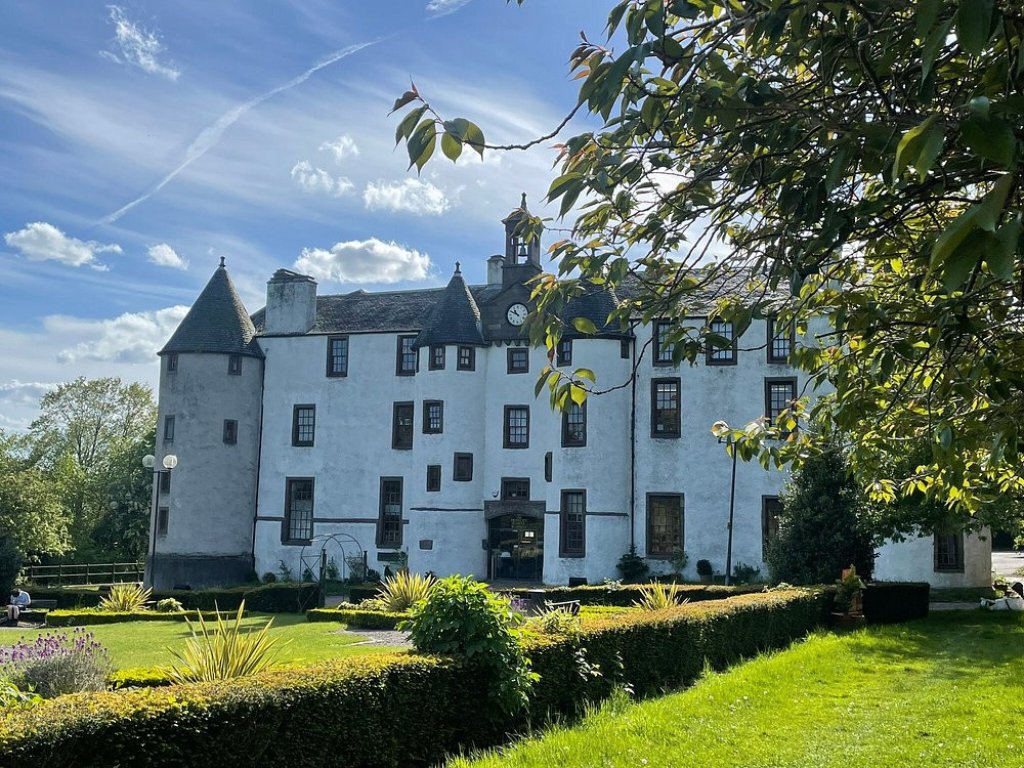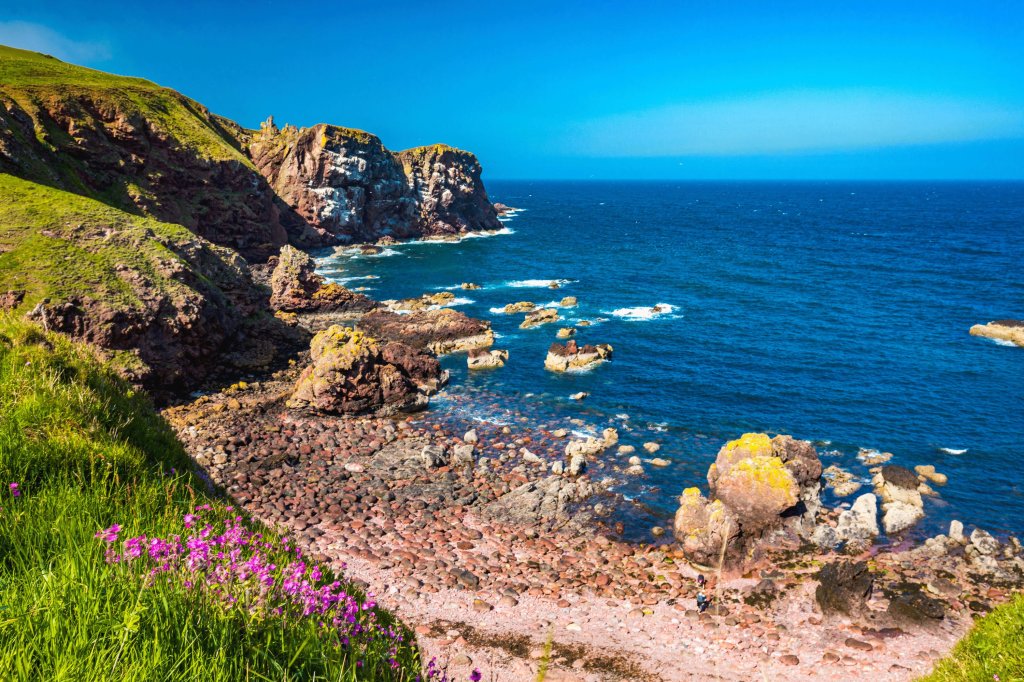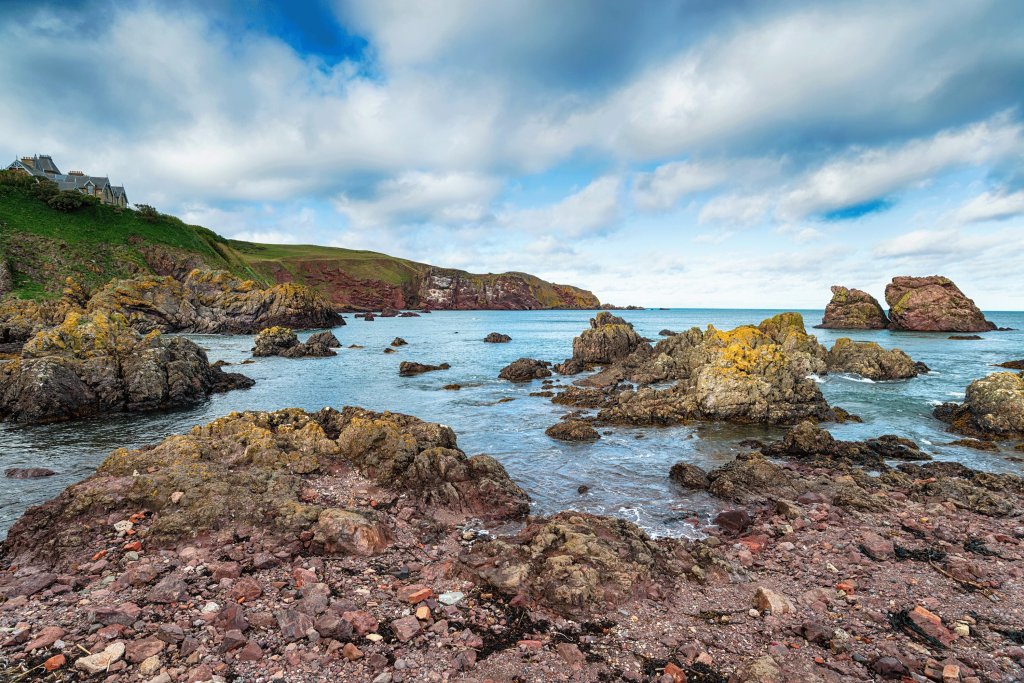
Secrets of the Scottish Borders
When most people think about Scotland’s coastline, they picture the wild west - sea lochs, mist-shrouded islands, winding roads that cling to cliffs.

When most people think about Scotland’s coastline, they picture the wild west - sea lochs, mist-shrouded islands, winding roads that cling to cliffs. But over on the east, down in the Scottish Borders, there’s another coastline quietly doing its thing. No hype. No crowds. Just a string of rugged cliffs, hidden beaches, and fishing villages that haven’t changed much in generations.
This is the kind of coast you stumble upon, and then wonder why no one told you about it sooner. It’s a place where puffins and seals outnumber people, where ruins perch on headlands, and where every cove feels like it belongs in a storybook.
So if you’re ready for something off the beaten path, here’s a coastal route to follow, from St Abbs down to Burnmouth, with a few secrets in between.
St Abbs: Wild Cliffs and a Harbour Lost in Time
Start your journey in St Abbs, a tiny fishing village with big views. Perched just north of Eyemouth, the village itself is like something from a film — and in fact, it was used as the backdrop for New Asgard in Marvel’s Avengers: Endgame. But don’t let that put you off — this place was special long before Thor moved in.
The real showstopper is St Abb’s Head, a nature reserve just outside the village. Walk the cliff path and you’ll find yourself surrounded by wildflowers, sea birds, and the sound of wind rushing through gorse and heather. In summer, the cliffs are thick with puffins, guillemots, and razorbills - a proper seabird city. The walk to the lighthouse and back is about 4 miles and packed with drama at every turn.
Need a breather? Stop in at Ebbcarrs Café down by the harbour for a crab sandwich and a scone, or just sit on the seawall and watch the boats sway in the tide.
Coldingham Bay: East Coast Calm
From St Abbs, take the coastal path or a quick drive inland to Coldingham, a village with roots going back to the 7th century. It’s home to the ruins of Coldingham Priory, once a powerful religious site, now a peaceful place to wander among ancient stones.
But just down the hill is Coldingham Bay, a sheltered beach that’s easily one of the Borders’ best-kept secrets. With golden sand, gentle waves and colourful beach huts, it’s got a touch of the English Riviera about it (just with fewer people and better chips).
It’s also a top spot for beginner surfers, with a surf school and gear hire right on the beach. But even if you’re not getting wet, it’s a great place to walk, paddle, or just sit in the dunes with a book and forget the world exists.
Pro tip: At low tide, walk along the rocks to the south end of the bay. There’s a secret little cove there, often completely empty.

Eyemouth: Harbours, History, and Seals in the Slipway
Further south sits Eyemouth, the largest town on this stretch of coast - but it still feels more like a big village. Fishing is still the heartbeat here. Wander the harbour and you’ll see boats coming in, gulls circling, and the odd seal poking its head above the water looking hopeful.
There’s real history here too. The Eyemouth Disaster of 1881 is etched into local memory - a storm that took the lives of nearly 200 fishermen. A sculpture by the water honours the lost men, and the town’s tiny but moving museum tells the story in detail.
If you fancy something lighter, head to Gunsgreen House, a smuggler’s mansion turned museum. It’s full of secret passages, hidden drawers, and tales of contraband tea and brandy.
Hungry? Giacopazzi’s chippy is a must. You’ll find locals, day-trippers, and the odd seagull eyeing your supper.
Eyemouth Disaster - 1881
In the autumn of 1881, Eyemouth was the homeport for 55 fishing boats. Seven were at the herring fishing at Yarmouth; the other 48 were line fishing from Eyemouth.
Fast Castle: The Wild One
You won’t find Fast Castle in many guidebooks, which is frankly a mystery. This ruined fortress is perched high above the sea on a narrow promontory, with nothing around it but sheep, sky and the roar of the waves below.
What’s left of the castle is mostly crumbling stone , but that doesn’t matter. It’s all about the location. Wild, windswept, dramatic. Mary, Queen of Scots is said to have stayed here. So did countless smugglers, soldiers and spies. Now it’s just you, the wind, and a view that feels like the end of the world.
Getting there: Drive down a quiet stretch of the A1107 and look for the small parking area at Dowlaw. From there, it’s a 1.5-mile walk across open fields and down a rocky path. Good boots and a head for heights required.
Burnmouth: The Village Below the Cliffs
Right on the English border, tucked into a deep cleft in the cliffs, lies Burnmouth. It’s not somewhere you stumble across by accident, unless your sat-nav takes a wrong turn. But if you do make the effort, you’ll be rewarded with a true hidden gem.
The village is split into four tiny harbours, each one with its own weathered charm. Walk the shoreline, watch the fishing boats, and soak up the peace. There’s no café, no visitor centre ; just salty air, quiet streets, and the kind of stillness you can’t fake.
Look up, and you’ll see the towering cliffs you descended to get here. In winter storms, the waves crash right over the harbour wall. In summer, it’s calm and almost dreamlike.
The Scottish Borders coast doesn’t need to shout. It’s not polished or packaged. It just is .Raw, real, and full of quiet wonder.
This is a place for walking boots and thermos flasks, for sketchbooks and sea air, for slowing down and noticing things. Whether you're on a windswept clifftop, paddling in a hidden bay, or sitting outside a harbour café with the gulls circling overhead, this stretch of coastline wraps around you like a secret.
And once you've found it, you'll wonder why it took you so long to get here.






